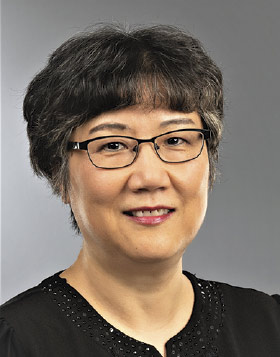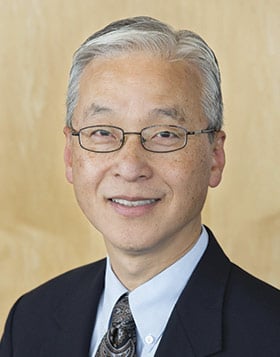HANLI LIU AND MICHAEL CHO, UNIVERSITY OF TEXAS AT ARLINGTON
Clinicians have long sought to understand the physiological causes of brain dysfunction. The adverse effects are sometimes attributed to traumatic brain injury or to aging. While some of the dysfunctional processes are becoming better understood, much is still to be learned about treatment and prevention of lasting effects on the brain from accidents or illnesses. It is time for doctors and researchers to seriously consider nonbiologic alternatives for treatment of brain conditions — such as noninvasive photostimulation — to fill in the gaps left by traditional medical approaches.
These advancements lead toward the conclusion that by optimizing photostimulation, mental alertness can be boosted and the level of oxidative stress can be reduced in the brain.
Photobiomodulation (PBM) is the term coined to describe low-power light stimulation, which has been utilized in a wide range of biomedical applications. Light-based therapeutic modalities in the near-infrared range of the electromagnetic spectrum are being refined to change subcellular events that influence physiological functions. These therapies could unlock some of the answers that other medical treatments have not yet found through the use of emerging nonbiologic technologies.
Stimulation in the NIR wavelengths is a focal point of the development of light-based therapeutics because of the absorption of these wavelengths by proteins that contain heme groups, such as hemoglobin and cytochrome c oxidase (CCO). Specifically, photons of appropriate wavelengths can affect CCO activity in the mitochondria. In this process, CCO accepts a photon and dissociates nitric oxide (NO). Flux through the electron transport chain is enhanced as a result, causing an increased production of powerful signaling molecules, including adenosine triphosphate (ATP), reactive oxygen species (ROS), and NO-mediated anti-inflammatory events that can accelerate healing.
Interestingly, fatigue may be overcome by increasing the body’s production of ATP. Moreover, a transient increase in ROS triggers activation of ROS-sequestering enzymes that lead to a reduction in oxidative stress over time. Oxidative stress can be the cause of everything from depression to Parkinson’s disease. Taken collectively, these advancements lead toward the conclusion that by optimizing photostimulation, mental alertness can be boosted and the level of oxidative stress can be reduced in the brain.
It should be noted here that there are likely more light-sensitive molecules that can respond to PBM, but they haven’t been fully elucidated yet. In addition to the heme group that contains proteins, light-activated ion channels could be just as important and initiate the subsequent intracellular signaling pathways.
The delivery of PBM to the human brain, along with the sought-after therapeutic effects it can have, still remains a challenge. Unlike many well-known laser treatments for dermatological disorders, accessing the brain with light is not simple, as the brain is protected by a thick skull that substantially attenuates the light intensity. Thus, establishing quantitative relationships that effectively regulate the light intensity delivered versus the optical dose received by the brain tissue are key to utilizing PBM as an efficacious therapeutic or protective treatment.
It is in pursuit of this objective that innovative technologies are rapidly converging into wearable technology that can provide continuous therapy and measurement.
While these light-based treatment concepts may still be emerging, it now seems feasible to design, test, and validate potential treatment modalities that offer the significant advantages of utilizing nonbiologic and noninvasive photostimulation. Besides, photobiomodulation itself needs to be recognized as a viable alternative to drug therapy, and as such should be provided with adequate funding opportunities to develop entirely new options for treatment of debilitating conditions.
Meet the authors
 Hanli Liu, Ph.D., received her doctorate in physics from Wake Forest University, followed by postdoctoral training at the University of Pennsylvania. She is a full professor of bioengineering and a distinguished university professor at the University of Texas at Arlington. She is also a fellow of the American Institute for Medical and Biological Engineering. Her expertise lies in near-infrared spectroscopy of tissues, functional optical brain imaging, and transcranial photobiomodulation (tPBM); email: [email protected].
Hanli Liu, Ph.D., received her doctorate in physics from Wake Forest University, followed by postdoctoral training at the University of Pennsylvania. She is a full professor of bioengineering and a distinguished university professor at the University of Texas at Arlington. She is also a fellow of the American Institute for Medical and Biological Engineering. Her expertise lies in near-infrared spectroscopy of tissues, functional optical brain imaging, and transcranial photobiomodulation (tPBM); email: [email protected].
 Michael Cho, Ph.D., is professor of bioengineering and serves as department chair at the University of Texas at Arlington. He is the Alfred R. and Janet H. Potvin Endowed Chair Professor and has been a fellow of the American Institute for Medical and Biological Engineering since 2011. His current research interests include the elucidation of mechanisms associated with traumatic brain injuries; email: [email protected].
Michael Cho, Ph.D., is professor of bioengineering and serves as department chair at the University of Texas at Arlington. He is the Alfred R. and Janet H. Potvin Endowed Chair Professor and has been a fellow of the American Institute for Medical and Biological Engineering since 2011. His current research interests include the elucidation of mechanisms associated with traumatic brain injuries; email: [email protected].
The views expressed in "Biopinion" are solely those of the authors and do not necessarily represent those of Photonics Media. To submit a Biopinion, send a few sentences outlining the proposed topic to [email protected]. Accepted submissions will be reviewed and edited for clarity, accuracy, length, and conformity to Photonics Media style.